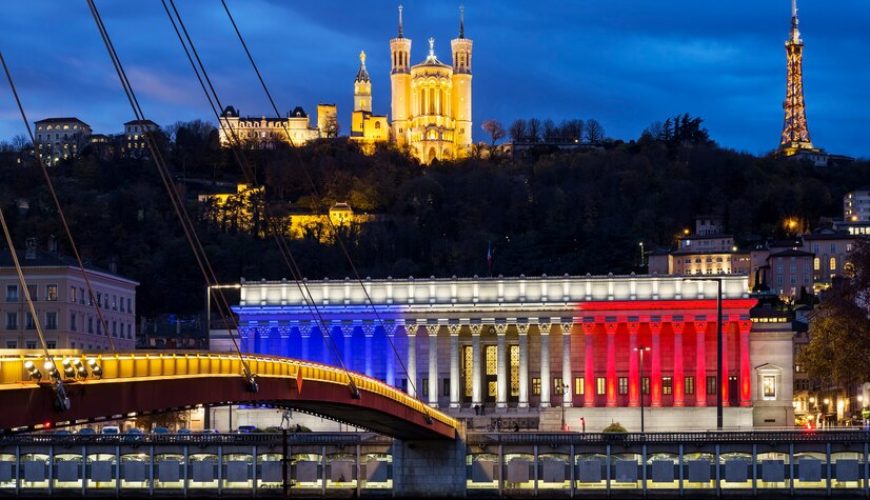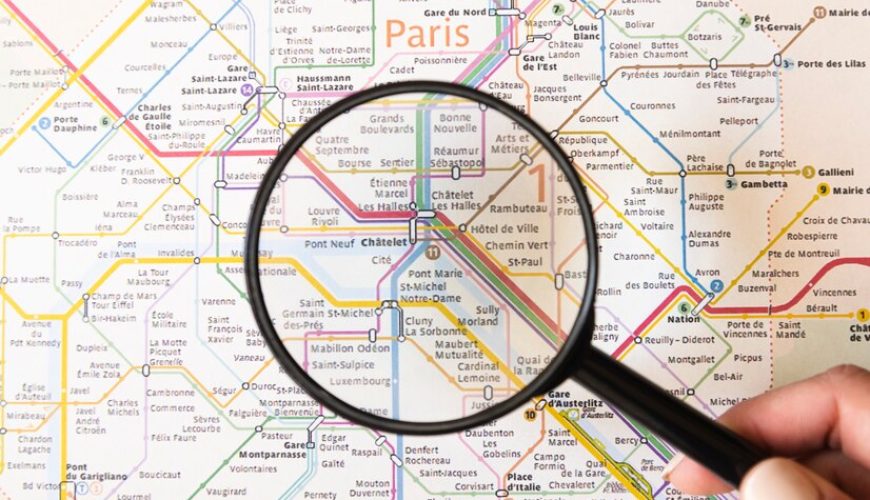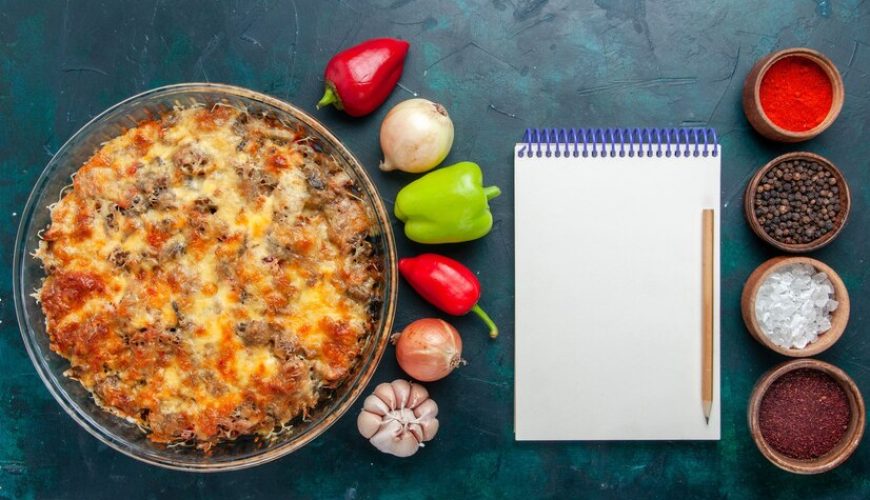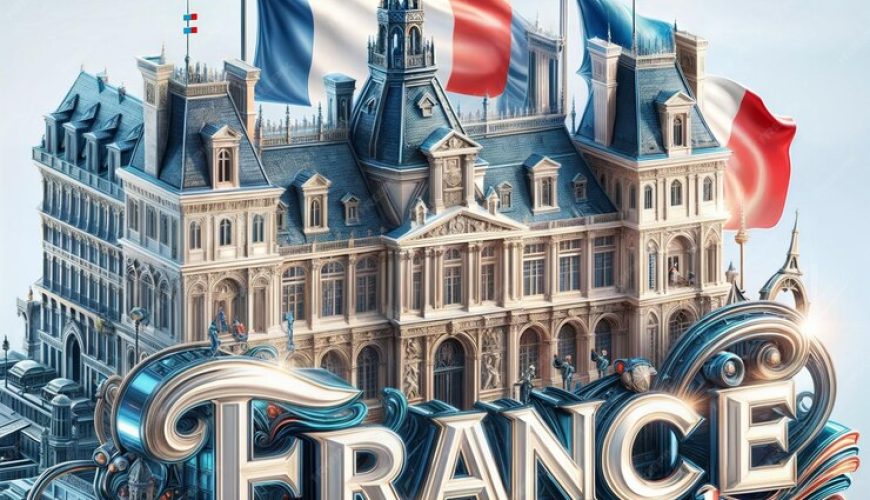10 Interesting Facts About Marseille
Marseille is a city that offers a perfect mix of history, culture, and natural beauty, making it a must-visit destination for travelers of all kinds.
Top 10 Most Beautiful Sites in Lyon
1. Fourvière Basilica (Basilique Notre-Dame de Fourvière) Perched atop Fourvière Hill, this iconic white basilica dominates the Lyon skyline. Its intricate architecture combines Romanesque and Byzantine styles, while the interior dazzles with gilded mosaics and stained-glass windows. Climb to the terrace for breathtaking panoramic views of the city below. 2. Vieux Lyon (Old Lyon) Step back in time in this enchanting Renaissance district, a UNESCO World Heritage Site. Wander through cobblestone streets lined with pastel-colored buildings, charming squares, and historic landmarks like the Saint-Jean Cathedral. Don’t miss the traboules, secret passageways that link courtyards and streets. 3. Parc de la Tête d’Or This expansive urban park is one of the largest in Europe and offers a peaceful escape from the city. Stroll through botanical gardens, visit the free zoo, or rent a boat to glide across the serene lake. In the spring, the rose garden blooms into a kaleidoscope of colors. 4. Croix-Rousse District Known as Lyon’s bohemian neighborhood, Croix-Rousse is perched on a hill and offers sweeping views of the city. It’s famous for its silk-weaving history, colorful murals like the Mur des Canuts, and vibrant street markets. The steep streets and artistic vibe make it a must-visit for photographers. 5. Place Bellecour One of Europe’s largest open squares, Place Bellecour is the beating heart of Lyon. The square features a striking statue of Louis XIV on horseback and offers postcard-worthy views of Fourvière Basilica. It’s a lively hub for events, markets, and starting your exploration of the Presqu’île district. 6. Musée des Confluences This futuristic museum is an architectural marvel, situated at the confluence of the Rhône and Saône rivers. Its bold design of glass and steel houses fascinating exhibitions that explore the intersections of science, anthropology, and culture. The riverside location is equally stunning. 7. Lyon’s Roman Theaters Located on Fourvière Hill, the Grand Théâtre and Odéon date back to Lyon’s Roman origins. These ancient amphitheaters are remarkably well-preserved and still host performances and festivals, such as the famous Nuits de Fourvière. 8. Saint-Jean Cathedral This Gothic masterpiece in Vieux Lyon is one of the city’s most impressive religious sites. Its intricate facade, stunning stained-glass windows, and the 14th-century astronomical clock inside make it a must-see for architecture and history lovers. 9. La Confluence District A striking contrast to Lyon’s historic districts, La Confluence is a modern urban area known for avant-garde architecture, stylish boutiques, and waterfront dining. The futuristic design of the buildings and the scenic riverside views create a unique and beautiful atmosphere. 10. Saône and Rhône Riverbanks The riverbanks in Lyon are perfect for a leisurely stroll or bike ride. Lined with greenery, public art, and scenic views of the city, these promenades offer a peaceful retreat. The illuminated bridges at night create a romantic and magical ambiance. From historic sites and architectural wonders to natural escapes and artistic treasures, Lyon offers beauty in every corner. Make sure to visit these breathtaking spots to truly appreciate the charm and elegance of this remarkable city!
Why Visit Lyon?
Nestled between the Rhône and Saône Rivers in southeastern France, Lyon is a city where history, gastronomy, and culture converge. Known as the “Gastronomic Capital of France” and a UNESCO World Heritage Site, Lyon offers a perfect blend of ancient charm and vibrant modernity. Whether you’re a history enthusiast, a foodie, or simply looking for a picturesque destination with a relaxed pace, Lyon has something extraordinary to offer. Here’s why Lyon deserves a spot on your travel list: Rich History & Heritage Lyon’s history spans over 2,000 years, dating back to its founding by the Romans in 43 BC as Lugdunum, the capital of Gaul. Today, Lyon boasts some of the best-preserved historical sites in Europe, such as Vieux Lyon, one of the largest Renaissance neighborhoods in Europe filled with colorful facades, cobblestone streets, and hidden passageways called traboules. On Fourvière Hill, the birthplace of Lyon, you’ll find the stunning Basilica of Notre-Dame de Fourvière and ancient Roman theaters still used for performances. In the Presqu’île, the city’s vibrant heart, you can explore grand 19th-century architecture, bustling squares like Place Bellecour, and elegant shops. Gastronomic Capital of France Lyon is world-famous for its culinary scene and is considered the birthplace of French gastronomy. Traditional bouchons serve hearty dishes like quenelles, saucisson brioché, and salade lyonnaise. The gourmet market Les Halles de Lyon Paul Bocuse offers the finest cheeses, pastries, and wines. Surrounded by the Rhône Valley and Beaujolais wine regions, Lyon is also an excellent place for wine tasting. For those seeking luxury, Lyon’s Michelin-starred restaurants elevate the culinary experience to an art form. UNESCO World Heritage Site Lyon’s beautifully preserved historical districts have earned it UNESCO recognition. From the Roman ruins on Fourvière Hill to the Renaissance architecture of Vieux Lyon and the elegant boulevards of the Presqu’île, the city is a living museum where every street tells a story. Vibrant Cultural Scene Lyon is a hub for arts and culture, offering diverse experiences such as the Fête des Lumières, a December festival where light installations illuminate the city’s landmarks. Museums like the Musée des Beaux-Arts and the Musée des Confluences explore fine art and the intersection of science and human history. The Opéra Nouvel and Célestins Theatre host world-class performances, ranging from opera to contemporary theater. Perfectly Located Lyon’s location makes it an ideal base for exploring France and beyond. It’s close to the Beaujolais and Rhône Valley wine regions and just a short drive from the French Alps for winter sports or alpine scenery. Lyon-Saint Exupéry Airport and the high-speed TGV train network make Lyon easily accessible from major cities like Paris, Marseille, and Geneva. A City of Innovation and Modernity While Lyon is steeped in history, it’s also a modern and forward-thinking city. The La Confluence District showcases cutting-edge architecture and eco-friendly urban planning. Lyon is also a hub for innovation and technology, blending tradition with progress. Stunning Parks and Outdoor Spaces Lyon offers plenty of green spaces to relax and unwind. The Parc de la Tête d’Or is one of Europe’s largest urban parks, featuring a zoo, botanical gardens, and a serene lake. The Riverside Walks along the Rhône and Saône are perfect for strolling or biking, with scenic views and lively cafes. Warm and Welcoming Atmosphere Lyon has a laid-back and welcoming vibe compared to larger cities like Paris. Locals are friendly, and the city’s manageable size makes it easy to explore and enjoy without feeling rushed. Festivals and Events Lyon’s calendar is filled with exciting festivals, including the Biennale de la Danse, the Biennale d’Art Contemporain, and Nuits Sonores, an electronic music festival attracting international artists. A Photographer’s Dream From the colorful facades of Vieux Lyon and the illuminated skyline at night to the charming traboules and the sweeping views from Fourvière Hill, Lyon is a city full of picture-perfect scenes. Why Wait? Lyon combines the charm of an old-world city with the vibrancy of modern life. Whether you’re drawn to its rich history, renowned cuisine, or cultural experiences, Lyon is a destination that promises unforgettable memories. Book your tour to Lyon today and discover why it’s one of France’s most enchanting cities!
Why Paris?
Paris, often referred to as the City of Light, is a dream destination for travelers from around the world. It’s a city that effortlessly blends timeless elegance with modern energy. Whether you’re admiring the art in world-renowned museums, strolling along the Seine River, or savoring a delicious meal in a charming café, Paris is a city that captivates the senses. Here are a few reasons why Paris should be at the top of your travel list:
You Can Visit a Lavender Paradise
The Provence region of southeastern France is world-renowned for its lavender fields, which bloom into a stunning sea of purple from late June to early August. This annual spectacle is one of the most iconic and enchanting sights in France. As you drive through the countryside, you’ll encounter endless rows of lavender stretching across rolling hills, creating a picturesque landscape that seems almost otherworldly. The vibrant purple fields, set against the backdrop of the Alps and sun-kissed villages, offer the perfect setting for photography, peaceful strolls, or simply soaking in the beauty of nature. During lavender season, the fields not only provide a stunning visual feast but also fill the air with their sweet, soothing fragrance. The scent of lavender, combined with the warm summer air, makes walking through the fields a truly sensory experience. It’s no wonder that Provence is considered a paradise for romantics and nature lovers alike. The region is dotted with charming villages like Sault, Valensole, and Gordes, where you can explore the fields, take guided tours, or even visit lavender distilleries to learn how lavender essential oils and other products are made. The small towns also host lavender festivals throughout the summer, offering a chance to enjoy local food, crafts, and, of course, the celebrated flower. For the best views and most vibrant fields, Plateau de Valensole is particularly famous for its expansive lavender fields that create a breathtaking contrast with the golden wheat fields surrounding them. The Lavender Route (Route de la Lavande) also takes visitors on a scenic journey through the region, passing the most photogenic fields and providing insight into the historical significance of lavender cultivation in Provence. Whether you’re visiting for the picturesque landscapes, the fragrance that lingers in the air, or the relaxing atmosphere, a trip to Provence during lavender season offers a truly magical experience.
Explore France Beyond Paris: Top Cities to Visit
While Paris often steals the spotlight, France is home to many other cities that offer rich culture, history, and unique experiences. Here are some top cities worth exploring: 1. Lyon Known as the culinary capital, Lyon is famous for its traditional Bouchon restaurants, its UNESCO-listed Old Town, and vibrant arts scene. Explore the city’s silk-weaving history and enjoy the local cuisine. 2. Marseilles With its Mediterranean charm, Marseilles offers a bustling port, stunning coastal views, and a rich cultural mix. Visit the Basilique Notre-Dame de la Garde for panoramic views and savor fresh seafood by the harbor. 3. Nice On the French Riviera, Nice boasts beautiful beaches, the Promenade des Anglais, and fantastic museums like the Matisse Museum. The Old Town offers colorful streets, and the laid-back atmosphere is perfect for relaxation. 4. Strasbourg Straddling the Franco-German border, Strasbourg’s timber-framed houses and stunning Strasbourg Cathedral reflect its unique blend of French and German culture. The city is famous for its Christmas markets and charming Petite France district. 5. Toulouse Known as the “Pink City”, Toulouse is famed for its red-brick buildings, vibrant atmosphere, and excellent food. Don’t miss the Basilica of Saint-Sernin and Cité de l’Espace, dedicated to aerospace. 6. Bordeaux A paradise for wine lovers, Bordeaux offers scenic vineyards, stunning neoclassical architecture, and the Place de la Bourse overlooking the Garonne River. It’s also known for contemporary culture and modern art museums. 7. Lille Lille blends French and Flemish influences, with its Grand Place, cobbled streets, and vibrant Old Town. The city is known for its markets and art museums, as well as the annual Braderie de Lille flea market. 8. Avignon Steeped in history, Avignon is home to the Palace of the Popes and the famous Pont Saint-Bénézet. The city comes alive during the Festival d’Avignon, one of the most important theatre festivals in the world. 9. Montpellier A youthful city in Occitanie, Montpellier offers a mix of medieval and modern architecture, along with vibrant street life and beautiful beaches nearby. Explore the Musée Fabre and enjoy the sunny Mediterranean climate. Conclusion Beyond Paris, these cities offer an array of experiences, from gastronomy in Lyon to the Mediterranean allure of Marseille. Whether you’re looking for historic landmarks, art museums, or beach resorts, each city provides its own distinctive flavor of French culture.
Top French Cuisine to Try
When visiting France, you’ll quickly discover that the country is a paradise for food lovers. Renowned for its rich culinary heritage, French cuisine varies by region but is always marked by exceptional flavors and meticulous techniques. Sampling some of the country’s iconic dishes should be a priority during your trip, as these meals offer a delicious window into the culture and history of France. Here are some must-try French dishes and culinary experiences: 1. Croissants and Pain au Chocolat Start your day the French way with a croissant or pain au chocolat for breakfast. These flaky, buttery pastries are a staple of French bakeries, often enjoyed with a café au lait or espresso. Croissants are light and crisp on the outside, soft and airy on the inside, while pain au chocolat is filled with a rich, gooey piece of dark chocolate, making it a perfect sweet morning treat. Be sure to stop by a local bakery, or boulangerie, to sample these fresh, melt-in-your-mouth delights. 2. French Onion Soup One of Paris’ most beloved dishes is French onion soup (soupe à l’oignon). This comforting classic consists of caramelized onions simmered in a rich broth, typically topped with a slice of toasted baguette and melted cheese, then baked until golden and bubbly. The combination of sweet onions, savory broth, and melted cheese creates a warm, satisfying dish that’s perfect for colder days. 3. Coq au Vin A quintessential French dish, coq au vin is a hearty stew made with chicken, red wine, mushrooms, onions, and herbs. This dish, originally from Burgundy, is slow-cooked to allow the flavors to meld together, creating a rich, flavorful sauce. Traditionally, coq au vin is made with a rooster, but today, most recipes use chicken. It’s a comforting and filling dish that pairs beautifully with a glass of Burgundy wine. 4. Boeuf Bourguignon Another classic from the Burgundy region, boeuf bourguignon is a beef stew slow-cooked in red wine, along with vegetables like carrots, onions, and garlic, and often flavored with herbs and bacon. The long simmering process ensures the beef becomes incredibly tender and absorbs all the complex flavors of the wine and aromatics. This rich dish is often served with boiled potatoes or crusty bread, making it a perfect winter meal. 5. Bouillabaisse If you’re visiting the Provence region or the French Riviera, don’t miss a bowl of bouillabaisse. This hearty, flavorful fish soup is typically made with a variety of fresh fish, shellfish, and aromatic herbs. The key to a traditional bouillabaisse is the use of saffron, which infuses the broth with a golden color and delicate flavor. Often served with toasted bread and a garlic mayonnaise sauce called rouille, it’s a fantastic representation of the Mediterranean’s bounty. 6. Ratatouille For a taste of the Mediterranean, ratatouille is a must-try dish, especially if you’re exploring the southern regions of France. This vegetable stew is made from a combination of eggplant, zucchini, tomatoes, bell peppers, and onions, all seasoned with fragrant herbs like thyme and basil. It’s typically simmered slowly to bring out the natural sweetness of the vegetables. Ratatouille is often served as a side dish or with a serving of rice or polenta, but it can also be a satisfying main course. 7. Escargots de Bourgogne (Snails) Escargots de Bourgogne are a famous French delicacy, particularly in the Burgundy region. While it might sound daunting to some, these garlic butter snails are a popular appetizer in France. The snails are typically cooked in a garlic butter sauce made with parsley, butter, and sometimes a bit of white wine, creating a rich, flavorful dish. If you’re open to trying new things, escargots are an essential part of French culinary tradition. 8. Macarons Macarons are one of the most iconic French desserts, made from almond flour, egg whites, and sugar, with a variety of fillings such as chocolate, vanilla, pistachio, or fruit jams. These delicate, colorful cookies have a crispy shell with a soft, chewy interior and are often found in pastry shops throughout Paris and other major cities. Their lightness and flavor make them a popular treat for those with a sweet tooth. Don’t forget to visit a well-known pâtisserie like Ladurée or Pierre Hermé for some of the best macarons in the world. 9. Tarte Tatin Tarte tatin is a classic French dessert that dates back to the late 19th century. It’s an upside-down caramelized apple tart, where the apples are cooked in butter and sugar before the pastry is placed on top and baked. Once done, the tart is flipped over, revealing a beautifully golden caramelized top. The tart is often served warm with a dollop of whipped cream or a scoop of vanilla ice cream, making it a comforting and indulgent way to end any meal. 10. Cheese and Baguette No trip to France is complete without indulging in some of the country’s world-renowned cheese. From the creamy Brie to the pungent Roquefort, and the tangy Comté, French cheese comes in a variety of textures and flavors, offering something for everyone. Often enjoyed with a baguette, cheese is an essential part of the French dining experience, whether as a starter or as part of a cheese course at the end of a meal. For a truly authentic experience, pair your cheese with some local wine for a perfect French treat. 11. Crêpes A beloved dish throughout France, crêpes are thin pancakes that can be filled with a variety of sweet or savory ingredients. The classic crêpes suzette is a sweet version served with an orange-flavored sauce, but savory crêpes, like those filled with ham, cheese, and egg (known as a galette), are also very popular. Crêpes can be found in restaurants, street food stalls, and crêperies, making them an easy and delicious meal option. Conclusion French cuisine is a feast for the senses, offering an array of flavors that reflect the country’s diverse geography and rich cultural history. Whether you’re indulging in a buttery croissant for breakfast, savoring a rich
How to Get Around France (Transportation Tips)
France is a country with an excellent and well-connected transportation system, making it incredibly easy for travelers to explore the diverse landscapes, charming towns, and vibrant cities. Whether you’re planning to visit the iconic landmarks of Paris or take in the beauty of the French countryside, there are plenty of convenient options to get around the country. 1. High-Speed Trains (TGV)One of the most efficient and comfortable ways to travel between cities in France is by taking the TGV (Train à Grande Vitesse), the country’s famous high-speed train network. The TGV connects major cities such as Paris, Lyon, Marseille, Nice, and Bordeaux, allowing you to travel quickly and comfortably, often in just a few hours. The TGV reaches speeds of up to 320 km/h (200 mph), making it one of the fastest ways to cover long distances. For example, you can travel from Paris to Lyon in about two hours or from Paris to Marseille in just three hours. TGV Lyria even offers routes between Paris and Switzerland, making it an excellent option for international travelers as well. 2. Regional Trains (Intercités)For a slower, yet scenic, journey through France, consider taking the Intercités trains. These trains connect smaller cities and towns not served by the TGV, and they often pass through the beautiful French countryside, offering passengers picturesque views of vineyards, rolling hills, and quaint villages. For a particularly scenic route, the Ligne des Cévennes line runs through the Cévennes National Park, offering travelers an immersive experience in nature, with the train passing through rugged mountains and lush forests. 3. Local Trains and Commuter ServicesIf you’re planning to visit smaller towns or rural areas, local trains operated by SNCF (the French national railway company) offer a more affordable option for getting around. These trains are typically slower and may make more stops, but they provide access to regions that are less accessible by high-speed rail. Many areas in the Provence, Brittany, and Loire Valley regions can be easily accessed via local train services. 4. BusesFor places that are not easily reachable by train, buses are an excellent alternative. France has an extensive bus network, especially in rural areas and smaller towns. Intercity buses, such as those operated by FlixBus and Ouibus, connect major cities and are a budget-friendly option for traveling between regions. Many regions also offer local buses that serve towns and villages, which are ideal for exploring less touristy spots. Although they may take longer than trains, buses can be a great way to reach off-the-beaten-path destinations, particularly in rural areas where trains don’t operate. 5. Renting a CarRenting a car is a fantastic way to explore regions outside the major cities, especially if you want to visit smaller towns, rural areas, or the French Riviera. Driving through regions like Provence, Normandy, Brittany, and the Loire Valley allows you to enjoy stunning landscapes at your own pace and visit picturesque villages that are not easily accessible by public transport. The French road network is extensive and well-maintained, and driving gives you the flexibility to stop whenever something catches your eye. Keep in mind, however, that parking in Paris or other major cities can be tricky and expensive, so it’s generally better to rent a car only when leaving the city. 6. CyclingFor the more adventurous traveler, cycling is an excellent way to explore the cities and countryside of France. Paris, Bordeaux, and Nice are particularly bike-friendly, with dedicated bike lanes and bike-sharing systems like Velib’ in Paris, Véloscénie in Bordeaux, and Vélo Bleu in Nice. These bike-sharing programs allow you to rent bikes for short trips, making it easy to explore different parts of the city. If you’re more interested in exploring the countryside, regions like Provence and Alsace are known for their scenic cycling routes, offering you an opportunity to immerse yourself in the natural beauty of France. 7. Métro and Trams in ParisFor those staying in Paris, the Métro is one of the most efficient and affordable ways to get around the city. The Paris Métro consists of 16 lines, connecting major tourist attractions such as the Eiffel Tower, Louvre Museum, and Montmartre. A single ticket allows you to travel throughout the city, including transfers between lines. For a more scenic mode of transport, the Tramway system runs in some areas of Paris and other cities like Marseille and Lyon, providing a smooth and enjoyable way to get from one neighborhood to another while taking in the local scenery. 8. Domestic FlightsWhile traveling by train or car is often the preferred mode of transport, domestic flights are also available for those looking to travel long distances quickly. Budget airlines like Air France, EasyJet, and Ryanair offer flights between major cities such as Paris, Toulouse, Nantes, Lyon, and Nice. Though not the most environmentally friendly option, flying can be convenient for travelers with limited time or those heading to distant regions, such as the island of Corsica or the far south of France. 9. Water Transport (Ferries)For those heading to Corsica, France’s islands, or the French Riviera, ferries are an excellent way to travel. From Marseille, ferries depart to the island of Corsica, while Nice offers boat trips to the nearby Lérins Islands. Traveling by ferry gives you a chance to enjoy the stunning views of the coastline and the Mediterranean Sea, offering a relaxing and scenic travel experience. Final Tips for Getting Around France: With so many transportation options at your disposal, getting around France is not only easy but also an opportunity to experience the country’s diverse landscapes and charming towns from a variety of perspectives. Whether by train, car, bike, or boat, traveling through France will undoubtedly be a memorable part of your trip.
Best Free Activities in France for Travelers
France offers countless opportunities to experience its rich culture, history, and beauty without spending a cent. Whether you’re in a bustling city or exploring the countryside, these free activities ensure you can enjoy the best of the country without breaking the bank!
Disneyland® Paris
In a fantasy world not so far away, Disney heroes and heroines live in fairytales that are, happily, never-ending. Enjoy endless fun in different magical lands. Experience your favorite Disney stories just as you remember them from classic Disney films. Here’s where fairytales really do come true. Thrills at Disneyland® Park come in all shapes and sizes. Big Thunder Mountain and Star Wars® Hyperspace Mountain offer a rush for grown-ups, while little ones can sail high into the moonlit sky with ‘Peter Pan’s Flight’. Of course, family fun can be found in every corner of the Park, from the ‘Pirates of the Caribbean’ to the ‘Mad Hatter’s Tea Cups.’ Meet Disney characters. Don’t miss the main attraction: a meet ‘n’ greet with beloved Disney characters. Have your pen and camera ready and meet the characters you love. Every day is a party at Disneyland® Park. On top of all the wonderful attractions and characters, there are lots of spectacular family parades and shows to enjoy all year round. Witness the mesmerizing Night Parade at Sleeping Beauty Castle! Watch as drones and fireworks paint the night sky with magical colors. Walt Disney Studios® Park: Discover the magical world of cinema and television at Walt Disney Studios® Park. Explore 4 Cinemagic studio lots featuring thrilling attractions and spectacular shows. Take center stage at the Studios, just footsteps away from Disneyland® Park. You never know which star you might meet. Team up with the Avengers and take on the mightiest MARVEL missions Avengers Campus land. Go behind the scenes and try the Worlds of Pixar area. Get whisked off to colorful worlds full of attractions, entertainment, food, and fun with Characters in settings straight from Ratatouille, Finding Nemo, Toy Story, and beyond.










